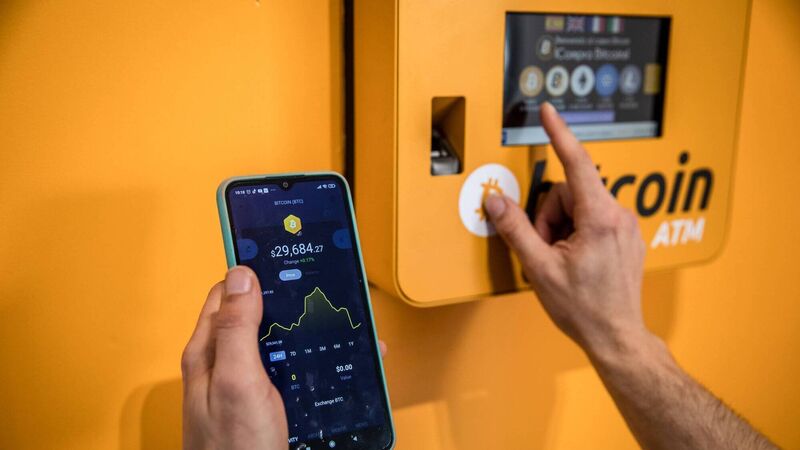Explainer: what do the EU regulations on cryptocurrency mean?

The proposed agreement will cover a wide variety of areas ranging from the rules on custody of digital assets to sales and trading of them, offering advice, and exchanging them for hard currency.
This week the EU reached a provisional agreement on its proposed regional regulations for the Markets in Crypto Asset (MiCA) directive.
The legislation will set out rules for the regulation of the digital asset sector in the EU.
The proposed agreement will cover a wide variety of areas ranging from the rules on custody of digital assets to sales and trading of them, offering advice, and exchanging them for hard currency.
It will also establish regulations regarding the supervision of crypto asset service providers (CASPs), as well as introducing environmental safeguards for crypto assets that run on blockchain technology, including cryptocurrencies like Bitcoin and Ethereum.
The legislation will also ensure that crypto assets can be traced in the same way as traditional money transfers. As a result, transfers of crypto assets will be traced and identified with the aim of preventing money laundering, terrorist financing, and other crimes.
The framework also requests that stablecoin issuers create a sufficiently liquid reserve. This follows the recent collapse of several stablecoins where approximately $2tn (€1.9tn) was wiped off the crypto market.
While blockchain technology for the creation of a cryptocurrency system first emerged in October 2008, the crypto asset industry has been largely unregulated. As the industry has become larger and more volatile many legislators began to call on governments to introduce rules to govern the sector.
Many regulators are now playing catch up with the industry as it enters a so-called ‘crypto winter’ with many crypto assets rapidly losing their value.
Bitcoin has fallen from a high of over €58,000 in November 2021 to now trading at just over €18,000.
Bruno Le Maire, French Minister for the Economy, Finance and Industrial and Digital Sovereignty, said: “Recent developments on this quickly evolving sector have confirmed the urgent need for an EU-wide regulation.”
In recent weeks the cryptocurrency industry has been experiencing significant volatility.
Stablecoin Terra collapsed in May, while in June crypto lender Coinbase froze withdrawals, this was followed by crypto hedge fund Three Arrows Capital falling into administration.
Amid uncertainty in the cryptocurrency market, Le Maire stated that the introduction of the legislation will both better protect Europeans who have invested in crypto assets as well as putting an end to “the crypto wild west”.
The Central Bank of Ireland has said that has previously issued “several warnings” to consumers about the crypto-asset sector.
In a statement issued to the Irish Examiner the Central Bank of Ireland said: “At this moment, the Central Bank has concerns about the considerable negatives associated with a range of crypto assets in particular where they are unbacked (or poorly or unreliably backed), widely and intensively marketed and promoted for consumer purchase, and increasing in their linkages to the wider financial system.”
It welcomed news of the agreement stating that it brings “regulatory clarity” to the rapidly growing sector.
For many people, a key drawback of crypto assets is the environmental impact of the sector. Amid growing concerns about electricity usage Bitcoin, the world’s largest cryptocurrency, is estimated to use 93 tera-watt-hours of electricity annually. This surpasses the yearly electricity usage of countries such as Finland and Belgium.
Bitcoin also emits around 65 megatons of carbon dioxide on an annual basis, a similar level of emissions to that of Greece.
All this makes cryptocurrency a major contributor to climate change and creates concerns among many legislators that the amount of energy used by blockchain technology.
MiCA will address some of the environmental concerns surrounding crypto, with firms forced to disclose their energy consumption as well as the impact of digital assets on the environment.
Political agreement reached today on #MiCA!
— EU Finance 🇪🇺 (@EU_Finance) June 30, 2022
The new rules on crypto assets will protect consumers, market integrity and financial stability. They will provide a clear legal framework for #crypto in the EU, enabling further innovation on a safe and sound basis.
📺 👇👇👇 pic.twitter.com/rBBCWRGSm8
Sinn Féin MEP Chris MacManus welcomed the agreement of the framework.
“MiCA also compels companies trading in crypto-assets to disclose the environmental impact of the processes behind the creation of that crypto-asset. As we know, some of these use very environmentally wasteful processes,” he said.
A prior proposal included in the framework would have prevented crypto mining, the energy-intensive process of minting new units of Bitcoin and other crypto tokens. However, this aspect of the directive was scrapped in a vote in March.
“The deal hammered out here is, unfortunately, weaker than what I sought and weaker than what was originally agreed by the EU Parliament in this important area but it still represents progress in making sure crypto-assets are monitored to check their environmental impact,” said Mr MacManus.
Non-fungible tokens (NFTs), are digital assets representing real objects like art, music and videos.
NFTs are bought and sold online, oftentimes using cryptocurrency. They are typically encoded using the same blockchain technology that is used for many cryptocurrencies.
Ireland alongside Lithuania and Hungary had opposed the inclusion of NFTs under MiCA in earlier discussions.
Under the agreed framework NFTs will be excluded from the scope of the directive unless they fall under existing crypto-asset categories. However, the European Commission has 18 months to prepare a comprehensive assessment and, determine if it is necessary to introduce similar regulations for NFTs.
- Additional reporting from Bloomberg











